For a project I have the lovely joy to create an equally spaced grid, to be placed on a map later in QGIS. To this end, I created 4 reference coordinates, defining the top left corner as well as the x and y spacing. Based on this grid, my Python programming yielded this extended grid:
As you can see it has several issues:
- Both in X and Y direction it looks wobbly, the points are not perfectly aligned
- The distance between the points is not the required distance
Problem 1 is, to my opinion, caused by the extension approach and losing significance in the digits. Problem 2 is caused due to a bad definition of coordinate sets.
However, I choose this approach as I did not find a way to define a rotated grid based on coordinates.
Preferably, I have following inputs to my script:
- Starting coordinate (i.e. top left)
- horizontal and vertical spacing
- number of rows / columns
What should be adopted to mitigate before mentioned issues or, in the ideal world, how could a solution direction look like based on the preferred inputs?
from string import ascii_lowercase
from geojson import Point, Feature, FeatureCollection, dump
def getExtraPolatedPoint(p1,p2, ratio):
'Creates a line extrapoled in p1->p2 direction'
b = (p1[0]+ratio*(p2[0]-p1[0]), p1[1]+ratio*(p2[1]-p1[1]) )
return b
L = [letter1+letter2 for letter1 in ascii_lowercase for letter2 in ascii_lowercase]
with open(r"4points.geojson") as json_file:
res = json.load(json_file)
features = []
feature_collection = FeatureCollection(features)
tl = None
for a in res["features"]:
b = a["geometry"]["coordinates"]
if tl is not None:
if tl[1]<b[1]:tl=b
if tr[0]<b[0]:tr=b
if br[1]>b[1]:br=b
if bl[0]>b[0]:bl=b
else:
tl = tr = br = bl = b
refP1 = tl
refP2x = tr
refP2y = bl
refP2xy = br
for i in range(16):
newP1 = getExtraPolatedPoint(refP1,refP2x,i)
newP2xy = getExtraPolatedPoint(refP2y,refP2xy,i)
for j in range(75):
gridPoint = getExtraPolatedPoint(newP1,newP2xy,j)
point = Point(gridPoint)
features.append(Feature(geometry=point, properties={"ID":L[i]+'{:02}'.format(j+1) }))
Update: It is a geo coordinate system, I.e. lat/lon coordinates. Rotation comes from the fact that we need to fit the lines on an object on the map, hence the above rotation.
Update 2: So, the pyproj was the helping hand. The missing term which connects the dots (no pun intended) is azimuth. Using this package I was able to create the maximum coordinates using the fwd function. Having that in place, the npts function created the necessary points in the spacing.
Sometimes thing are obvious, if you know what you are looking for...
